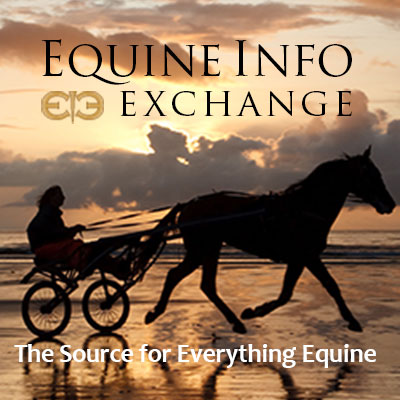Tack & Farm
Our Tack & Farm section features an Apparel section to find both practical and fashionable riding attire. If you ride English & Western or Race, many sources are available in the Tack section.
Building a barn? Need an architect for your equine dream home? Find one in Barns & Stalls.
Have a hungry horse? Of course you do! Find a place to buy your feed and tuck your horse in at night in the Bedding & Feed section. Looking for a place to keep your horse? You can find it in the Horse Boarding section. Keep your horse happy and beautiful with resources in our Grooming section.
Traveling? Find a Shipping company or Horse Sitting service if your horse is staying home!
Running and maintaining a farm or stable is a continuous effort, and to help find products or tools you need, please see our Equipment, Fencing and Management Tools sections.
Seeking Services? Find financial and tax expertise in our Accounting section. Companies who will help protect your investment are found in the Insurance section. For those who want legal advice about purchasing, liability, and other issues, please look at the Equine Law section to find an expert. Build and promote your business with teams from Marketing / Videography / Web Design.
Do we need to add more? Please use the useful feedback link and let us know!
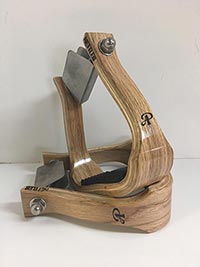
by Nick Pernokas
Ronnie Nettles’ legs were bothering him. His narrow oxbow stirrups, the norm for cutting horse trainers in the 1980’s, were rubbing on his shins. It probably wouldn’t have bothered a guy who just had one horse to ride, but as a cutting horse trainer at the top of the game, Ronnie had a barn full of horses to work every day. He got relief by wrapping his legs with Vetwrap every morning.
Still, Ronnie was one of the lucky few that have been able to hang out their shingle, and make a living doing what they love to do. Ronnie didn’t just make a living though; he was successful enough to be a major player in the National Cutting Horse Association events.
“Horses have always been a passion with him, not a job,” says Gala Nettles, Ronnie’s wife.
The Madisonville, Texas, trainer won the NCHA Cutting Futurity in 1984, which is the dream of every cowboy that swings a leg over a cutting horse. He followed this by being co-champion of the NCHA Superstakes in 1985, co-champion of the NCHA Derby in 1989 and numerous other awards along the way. Ronnie realized that even with the financial boost winning those titles brought, long-term security could be fickle when depending upon the luck of the draw. The oil boom, which had supported much of the horse industry in the Southwest, was coming to an end. Customers who had paid the training bills were starting to have hard times. He wanted something else to ensure stability for his family.
Ronnie had inherited a love of woodworking from his father, who had been a carpenter. He had a small shop where he built items for the ranch as a hobby. One Christmas, Gala had searched for an heirloom quality rocking horse for her first grandchild with no luck; none of them met her standards for size, appearance or sturdiness. Finally, Gala found a picture of one in a magazine that was really nice.
“Do you think you could build one of these in nine days?” Gala asked Ronnie. They had just returned home from a grueling two-week futurity in Fort Worth; Ronnie welcomed a different challenge. Working late every night, he cut, glued and sanded until he created a beautiful rocking horse. He topped it off with a replica of a saddle that he carved from oak. Only one thing remained – he needed to find some miniature stirrups.
“I wanted everything realistic, and to scale, and there weren’t any small stirrups to buy,” chuckles Ronnie, “so I cut strips of white pine, soaked them in water, then built a little jig to hold the pieces and glued it together.” The first Nettles Stirrups were born.
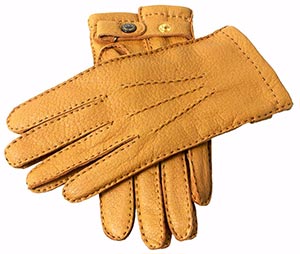
by Lynn Ascrizzi
When it comes to the making of fine leather gloves, you’d be hard-pressed to find a glover with the preeminence and royal panache that is Dents. Dents has maintained its royal cachet and ‘absolutely top-end’ credo, for 240 years
This small, luxury goods business, founded in 1777 by John Dent in Worcester, England, is quite possibly Britain’s oldest fashion manufacturer, a company meticulously crafting gloves of distinction since the days of that beleaguered monarch, King George III, who reigned during the American Revolution.
Today, Dents is a subsidiary of Dewhurst Dent, PLC, owned by Robert Yentrob since the mid-1960s. The company manufactures leather gloves and designs other accessories, such as leather handbags and wallets, classic hats and finely woven wool scarves.
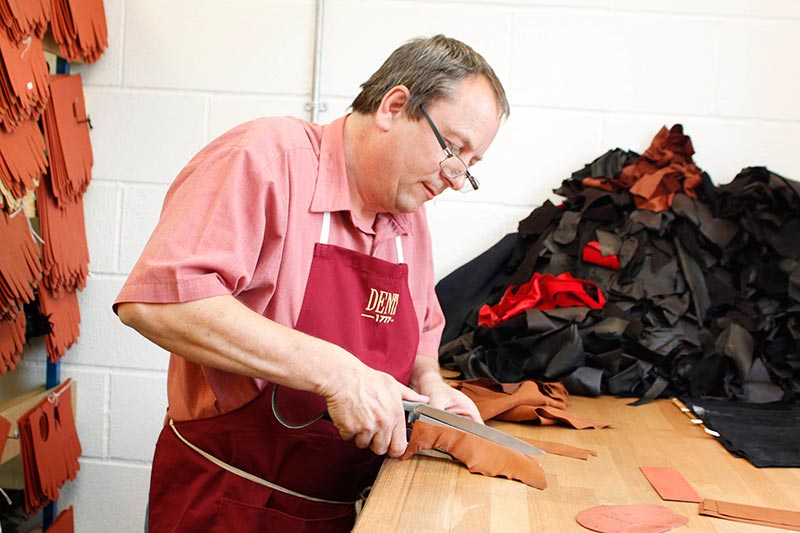
“We still have a factory here and still produce gloves — table cut — the old way,” said company chief executive Deborah Moore, who has been with Dents for 27 years. “Each glove is cut out separately and handsewn. It’s the craftsmanship, the love we put into making them. It’s tangible,” she said. Their heritage line, made exactly the same way today as 100 years ago, also includes machine-sewn gloves.
Launched in the UK now available in the USA! Boobuddy Black Adjustable Breast Support Band Sports Bra Alternative Run. This product is terrific to keep you in place while working out or horseback riding!
Boobuddy is a new wearable band for women who want additional support, comfort, and confidence when horseback riding. It can be worn across the top of the breasts and either over or under a sports bra or in fact any regular bra. Are your assets getting in the way of your sport and lifestyle activities? The Boobuddy has been developed to reduce vertical and lateral movement, prevent injury, pain, ligament damage and sagging. Benefit from a new level of comfort, performance, and confidence thanks to this wonderful fitness accessory!
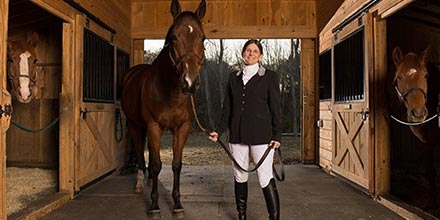
By Nikki Alvin-Smith
When I arrived in America from Great Britain eons ago, I was soon engrossed in everything horse. In fact, it only took me a few months to purchase my first USA horse and put him in livery. My first and only boarding barn experience was at Caumsett State Park Stables, Lloyds Harbor, NY, at the previous estate of Marshall Field, the American entrepreneur and founder of Marshall Field of the Chicago-based department stores.
While the majority of horses were stabled in the new forty stall metal structure with two long aisles with ten stalls set each side of a center space, the original brick built polo barn was home to a couple of Grand Prix showjumpers, and also the location for the only bathroom available, so trips to and from and through the grand building were a necessity.
These trips would have been much more enjoyable without having to negotiate the fierce Dobermans, named Angel and Lucifer, who the leaseholders of the property kept on the farm (at some point Lucifer attacked our poodle resulting in an expensive veterinary visit so that dog was aptly named).
Despite the dogs unwanted accompaniment of my visits, as I walked through these beautiful stables the center aisle design was obviously a superb idea.
The center aisle design was especially appreciated during our first American winter, when the weather surprised us with its tenacity and three feet of snow. Blissfully unaware of how difficult negotiating the drive to the barn would be, we knew once there we would find safe harbor from the weather in the center aisle barn to tack up before we headed to the indoor to ride.
En route to the barn we encountered the scary appearance of a huge bright yellow behemoth, a snowplow, which tore through the country road with little regard for where we were going to place our car to avoid a head on collision. It was quite a surprise to us, as England had no snowplows (even now I believe the country only has a handful).
Read more: Is it Time to Walk Your One True Love Down the Center Aisle?
- Mobile Apps
- Winter Preparation in the Barn
- Little’s Boots - Custom Bootmakers Since 1915
- Horizon Structures Presents: The Top Five Most Important Features to Feature in Your New Horse Barn
- Martin Saddlery: They Know the Ropes
- Smart Solutions for Summer at the Barn
- Horizon Structures Presents….Don’t Fool Around with Foal Safety
- Barn Hacks: The Dollar Store Edition
- Trailer Towing 101
- Hidden Benefits of Alfalfa








